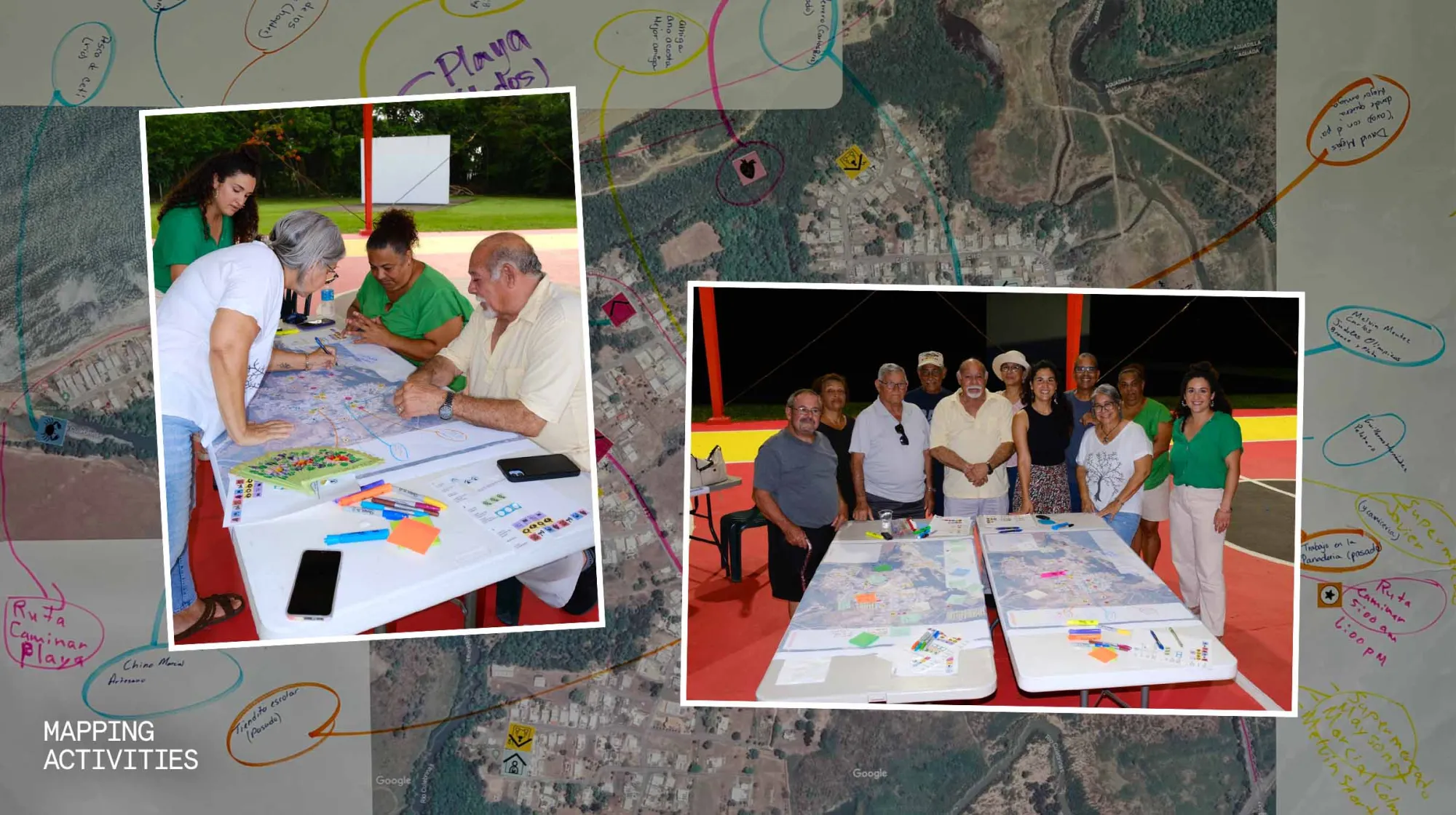
by Gabrielle Hernandez
Keila Z. Pérez Quiñones and Katherine Pérez Quiñones share more than a last name. They share a commitment to their hometown of Aguada, a coastal community in northwestern Puerto Rico.
Keila, assistant professor of practice in the Department of Design, and Katherine, a doctoral candidate in Community and Regional Planning at the School of Architecture, returned home to lead a collaborative project focused on community memory, climate resilience and future planning. In working with residents, they were able to document local knowledge and envision how the community can respond to environmental and climate-related challenges.
Residents of Aguada have long been negotiating the realities of coastal erosion, flooding and shifting ecological patterns. Katherine’s doctoral research looks to understand these dynamics from the perspective of the people who live them every day. The sisters recognized that a participatory approach—one centered on oral histories and collective design activities—could illuminate what residents value, fear, and hope for.
The collaboration naturally became interdisciplinary. Their methods blended design, planning, anthropology, and sociology to capture a holistic view of community life. During a series of workshops, they guided residents through three interactive exercises: mapping activities, collage creation, and temporal reflections on the past, present, and future. These methods, Keila explained, allowed participants to surface “situated knowledge,” memories of place, relationships with neighbors, and observations of how their community has evolved.

The first mapping exercise invited residents to identify meaningful spaces and connections across the territory. A second activity focused on social and environmental challenges, helping visualize the risks that shape everyday life. The final activity, a collaging exercise, asked each participant to imagine a future vision. They chose among three themes: healthy coasts and water bodies, public spaces that support local well-being, and joyful aging within their community. Using background images from the town, residents crafted visions of what a thriving, multi-generational community could look and feel like.
“These processes have inherent value,” Katherine noted. “They bring people together to talk about the present and the future.” The long-term goal is to ultimately empower residents with advocacy materials, enabling them to engage in conversations about public policy and community investment.
The project also offered personal and professional insights. For Keila, the workshops now inform her teaching in participatory design and play design within her classes at UT Austin. For Katherine, they reaffirmed the necessity of inclusive, community-driven decision-making in climate adaptation. Both emphasized that design, art, and planning must work together so residents’ visions can take shape.

Keila and Katherine’s work demonstrates how participatory research can reveal collective identity, strengthen resilience, and inspire action. By centering residents’ voices, their project not only celebrates Aguada’s creativity, memory, and hope but also equips the community to shape its future and confront challenges together.
Gabrielle Hernandez is the communications manager for the School of Design and Creative Technologies.

